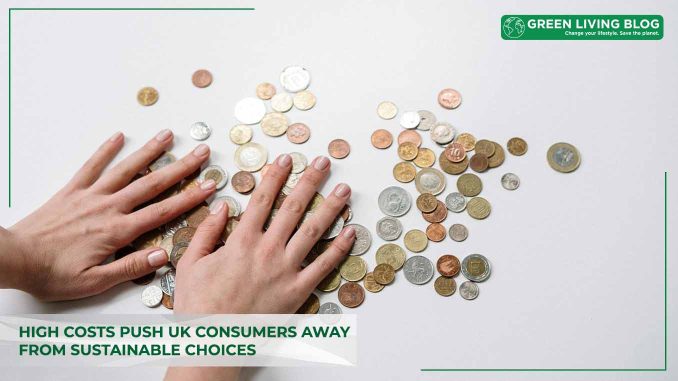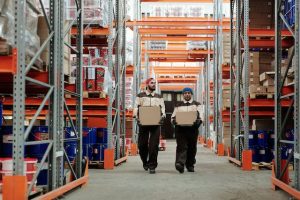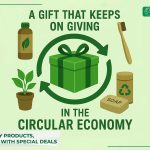
Recent UK trends show an increasing preference towards eco-friendly packaging, yet the high costs drive consumers towards more affordable but less sustainable options.
In the UK, a rising awareness of environmental issues drives interest in eco-friendly packaging. However, the higher cost of sustainable options often leads consumers to choose less environmentally friendly alternatives.
This article – presented by stand up pouches and flexible packaging company, Polypouch – delves into this growing dilemma, highlighting the challenges and exploring potential pathways to make sustainable packaging a feasible choice for both consumers and businesses.
Understanding Consumer Choices: Price vs. Sustainability

Recent data from YouGov reveals a startling reality in the UK’s consumer market.
Despite a general preference for eco-friendly products, around 68% of adults over 18 rarely or never opt for products with sustainable packaging due to the higher costs. Ipsos research supports this, noting that 44% of Britons find sustainable products more expensive, while 39% are confused by the higher prices of greener options.
This gap between environmental intentions and financial feasibility suggests more education and perhaps policy changes to facilitate easier sustainable choices across the UK.
Eco-friendly Packaging: A Growing Demand Amidst Cost Concerns

The surge in online shopping in recent years has led to an increase in packaging waste, raising environmental concerns. In 2023, the UK’s average plastic consumption per capita stood at 31.1kg, with over half of the packaging waste being non-recyclable.
This has heightened consumer demand for sustainable packaging options. However, the willingness to pay more for these eco-friendly alternatives is hindered by their higher production costs, exacerbated by inflation, energy expenses, and material shortages.
Post-Pandemic Consumer Trends: Hygiene and Sustainability
The COVID-19 pandemic initially shifted consumer focus towards hygiene, momentarily slowing the momentum towards sustainable packaging. However, as hygiene concerns have subsided, the emphasis on eco-friendly packaging has resurged. McKinsey’s 2023 report highlights a renewed consumer interest in sustainable packaging, particularly in developed countries like the UK.
The UK Packaging Industry’s Innovative Response
In response to these trends, UK packaging giants like Amcor and DS Smith are innovating to balance sustainability with affordability. Advances in recyclable materials, such as PET bottles and PCR content in packaging, represent steps towards more environmentally friendly yet cost-effective solutions.
Towards Affordable Sustainability: A Collaborative Effort

Addressing the cost barrier in sustainable packaging requires a comprehensive approach. This involves investing in cost-efficient production technologies, government incentives for sustainable practices, and consumer education about the long-term benefits of eco-friendly packaging. Such a coordinated effort can help narrow the cost gap between sustainable and traditional packaging.
Who Should Bear the Cost of Sustainability?
The question of who should bear the sustainability cost – brands, retailers, or consumers – remains a topic of debate. Some experts advocate for a shared responsibility, rather than placing the entire burden on consumers.
Leading the Way: UK’s Sustainable Packaging Initiatives
Illustrative of successful efforts, several UK supermarkets and brands are implementing sustainable packaging strategies. Tesco’s collaboration with Loop to create a packaging reuse system exemplifies practical steps towards reducing packaging waste and serves as a model for other companies seeking to adopt similar sustainable practices, rather than remain bystanders to environmental change.
The Future of Packaging: Affordable and Sustainable

The ultimate goal is a packaging industry where sustainability is the norm, not a premium feature. Achieving this requires ongoing innovation, regulatory support, and a collective effort from manufacturers, consumers, and policymakers. The journey towards making sustainable packaging both eco-friendly and affordable is challenging, but with concerted efforts, it is achievable.
In Summary
The tug-of-war between choosing eco-friendly but expensive packaging and opting for affordable, non-sustainable alternatives is a significant challenge in the UK. Overcoming this dilemma necessitates a deep understanding of market dynamics and a collaborative strategy to devise solutions that benefit the environment and consumers alike.
![]()
Author Profile
- Online Media & PR Strategist
- Blogger and Educator by Passion | Senior Online Media & PR Strategist at ClickDo Ltd. | Fascinated to Write Lifestyle Blogs in News & Education I have completed a journalism summer course at the London School of Journalism and manage various blogs.
Latest entries
 Green GuidesMay 29, 202519 Best Eco-Friendly Products, Services & Gifts – With Special Deals
Green GuidesMay 29, 202519 Best Eco-Friendly Products, Services & Gifts – With Special Deals List postMay 28, 202510 Everyday Items with PFAs (‘Forever Chemicals’) and Green Alternatives
List postMay 28, 202510 Everyday Items with PFAs (‘Forever Chemicals’) and Green Alternatives List postMay 22, 20258 Eco-Friendly & Energy-Saving Home Gadgets for Daily Routines
List postMay 22, 20258 Eco-Friendly & Energy-Saving Home Gadgets for Daily Routines Green LivingMay 15, 20258 Healthy BBQ Swaps for a Cleaner, Greener, Guilt-free Grillfest
Green LivingMay 15, 20258 Healthy BBQ Swaps for a Cleaner, Greener, Guilt-free Grillfest






Leave a Reply
You must be logged in to post a comment.